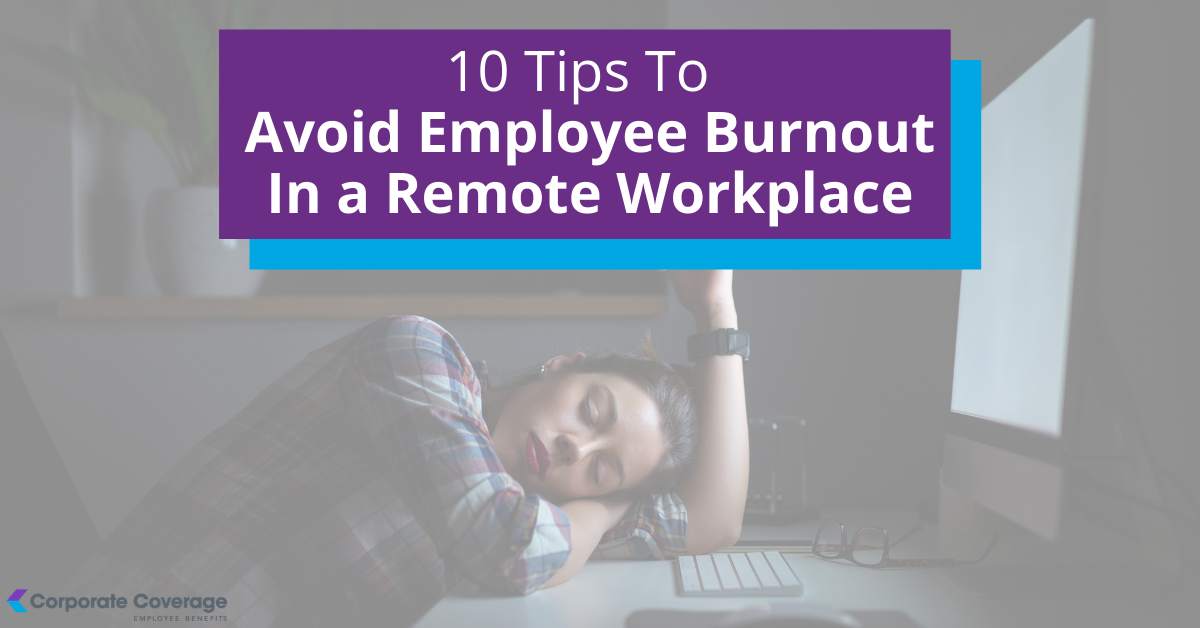10 Tips to Avoid Employee Burnout In a Remote Workplace

What does your team’s remote workday look like? For many workers, the new “normal” routine consists of getting out of bed and logging on to work. ⠀
You don’t need us to tell you what kinds of negative effects this lack of work/life balance can bring!⠀
While talks have started about returning to regular office life, it’s likely that work-from-home isn’t disappearing too fast. 69% of remote employees are experiencing burnout.
What is burnout?
The World Health Organization (WHO) now considers burnout to be a syndrome. In previous editions of the WHO’s International Classification of Diseases (ICD-11), burnout wasn’t considered a serious condition, and its only listed symptom was exhaustion.
The WHO’s decision to upgrade burnout to a syndrome and provide a detailed set of symptoms communicates its serious stance on the dangers of burnout. Additionally, the WHO clarified in a public statement that burnout is an “occupational phenomenon” resulting “from chronic workplace stress that has not been successfully managed.”
What does burnout look like?
Symptoms of burnout include:
- Increased exhaustion or energy depletion
- Decreased engagement at work
- Increased feelings of job-related negativity or cynicism
- Reduced productivity or efficacy
The negative effects of burnout can extend beyond the workplace and into the home and social life of your employees. It can also increase their risk of getting sick and developing chronic conditions.
Make sure your employees aren’t among them by guiding them in these ten ways:
-
Work with employees to create a schedule.
When working from home, it can be difficult to step away from work when the day is done, causing employees to work longer hours than normal. Help your staff create schedules to encourage efficient working hours.
-
Plan and Prioritize.
When properly prepared, employees won’t panic when they feel stressed. Assist employees in creating lists of the tasks they need to complete, and set realistic deadlines.
-
Make sure that workloads are appropriate.
Assigning reasonable amounts of work to your employees can remove some of the stress that leads to burnout.
-
Train managers on how to keep employees engaged and motivated at work.
To foster a healthy workplace, make sure managers meet regularly with employees to facilitate communication, and give them the tools to address burnout with employees.
-
Address negative and illegal actions in the workplace immediately.
Do not tolerate bullying, discrimination or any other similar behaviors.
-
Recognize and celebrate employees’ successes.
This contributes to morale and decreases stress levels.
-
Incorporate company-sponsored activities.
Even when operating a remote workplace, there are a myriad of team building activities that you can incorporate into your team’s schedules. Give employees a reason to leave their desks and take a break!
-
Encourage employees to utilize their paid time off.
It’s there for a reason. In the long run, productivity will only increase when your staff has the chance to take a break, allowing them to come back refreshed and renewed.
-
Promote exercise at your organization, as it’s a proven stress reliever.
A little movement can go a long way.
-
Inform employees of mental health resources.
Your employee benefits may include employee assistance plans, telemental health coverage and discounted/free virtual counseling to help cope with the stresses of pandemic life. Your employees can only take advantage of such benefits if they’re aware of them!
Burnout is a serious syndrome that may be affecting your employees. As such, it’s important that you recognize the signs of burnout and take steps to prevent it at your workplace. Our hope is that by following these tips, you can create a positive work environment for your team, where employee wellness and productivity go hand-in-hand.